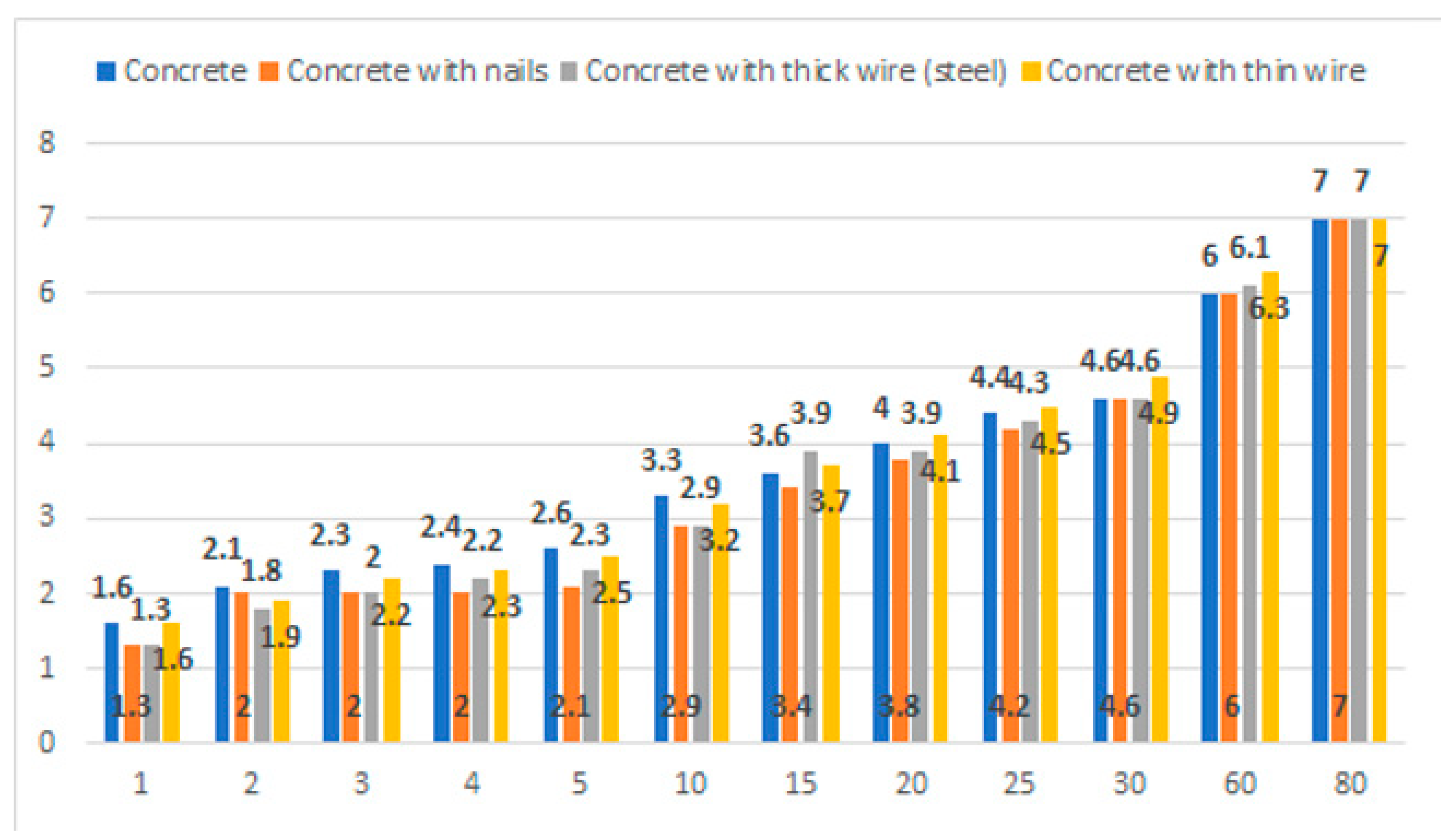Electrical Resistivity and Moisture Content Measurements for Some Concrete Samples †
Acknowledgments
References
- Basheer, L.; Kropp, J.; Cleland, D.J. Assessment of the durability of concrete from its permeation properties: A review. Constr. Build. Mater. 2001, 93, 103–115. [Google Scholar] [CrossRef]
- Layssi, H.; Alizadeh, A.R.; Ghods, P.; Salehi, M. Electrical Resistivity of Concrete. Concr. Int. 2015, 37, 41–46. [Google Scholar]
- Su, J.K.; Yang, C.C.; Wu, W.B.; Huang, R. Effect of moisture content on concrete resistivity measurement. J. Chin. Inst. Chem. Eng. 2011, 25, 117–122. [Google Scholar] [CrossRef]


© 2019 by the authors. Licensee MDPI, Basel, Switzerland. This article is an open access article distributed under the terms and conditions of the Creative Commons Attribution (CC BY) license (http://creativecommons.org/licenses/by/4.0/).
Share and Cite
Udrea, M.L.; Trăistaru, V.; Sorescu, A.-A.; David, M.E.; Andrei, E.R.; Ion, R.M. Electrical Resistivity and Moisture Content Measurements for Some Concrete Samples. Proceedings 2019, 29, 60. https://doi.org/10.3390/proceedings2019029060
Udrea ML, Trăistaru V, Sorescu A-A, David ME, Andrei ER, Ion RM. Electrical Resistivity and Moisture Content Measurements for Some Concrete Samples. Proceedings. 2019; 29(1):60. https://doi.org/10.3390/proceedings2019029060
Chicago/Turabian StyleUdrea, Mihaela Luminița, Vanessa Trăistaru, Ana-Alexandra Sorescu, Mădălina Elena David, Elena Ramona Andrei, and Rodica Mariana Ion. 2019. "Electrical Resistivity and Moisture Content Measurements for Some Concrete Samples" Proceedings 29, no. 1: 60. https://doi.org/10.3390/proceedings2019029060
APA StyleUdrea, M. L., Trăistaru, V., Sorescu, A.-A., David, M. E., Andrei, E. R., & Ion, R. M. (2019). Electrical Resistivity and Moisture Content Measurements for Some Concrete Samples. Proceedings, 29(1), 60. https://doi.org/10.3390/proceedings2019029060



.jpg)


